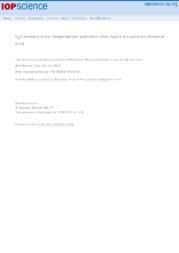N2O emissions due to nitrogen fertilizer applications in two regions of sugarcane cultivation in Brazil.
N2O emissions due to nitrogen fertilizer applications in two regions of sugarcane cultivation in Brazil.
Summary: Among the main greenhouse gases (CO2, CH4 and N2O), N2O has the highest global warming potential. N2O emission is mainly connected to agricultural activities, increasing as nitrogen concentrations increase in the soil with nitrogen fertilizer application. We evaluated N2O emissions due to application of increasing doses of ammonium nitrate and urea in two sugarcane fields in the mid-southern region of Brazil: Piracicaba (São Paulo state) and Goianésia (Goiás state). In Piracicaba, N2O emissions exponentially increased with increasing N doses and were similar for urea and ammonium nitrate up to a dose of 107.9 kg ha-1 of N. From there on, emissions nexponentially increased for ammonium nitrate, whereas for urea they stabilized. In Goianésia, N2O emissions nwere lower, although the behavior was similar to that at the Piracicaba site. Ammonium nitrate emissions increased linearly with N dose and urea emissions were adjusted to a quadratic equation with a maximum amount of 113.9 kg N ha-1. This first effort to measure fertilizer induced emissions in Brazilian sugarcane production not only helps to elucidate the behavior of N2O emissions promoted by different N sources frequently used in Brazilian sugarcane fields but also can be useful for future Brazilian ethanol carbon footprint studies.
Publication year: 2013
Types of publication: Journal article
Unit: Embrapa Maranhão
Observation
Some of Embrapa's publications are published as ePub files. To read them, use or download one of the following free software options to your computer or mobile device. Android: Google Play Books; IOS: iBooks; Windows and Linux: Calibre.
Access other publications
Access the Agricultural Research Database (BDPA) to consult Embrapa's full library collection and records.
Visit Embrapa Bookstore to purchase books and other publications sold by Embrapa.

